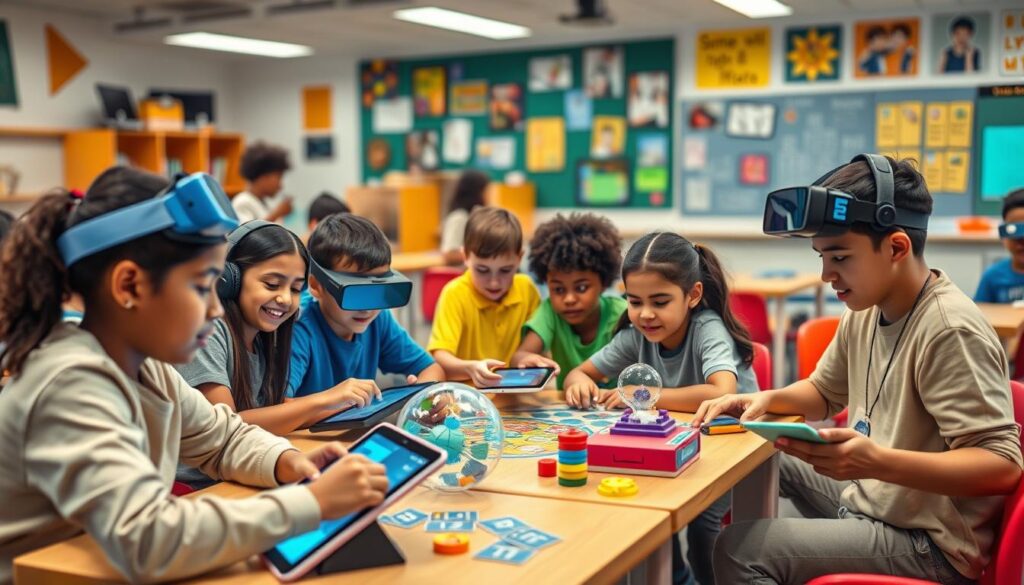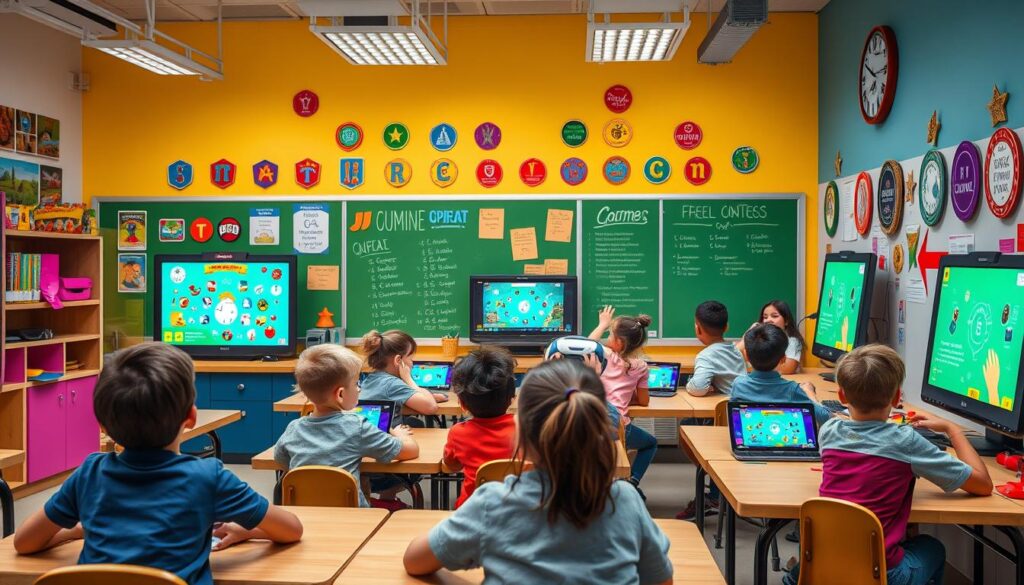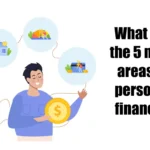Did you know over 70% of students in the United States feel more excited in classes that use games? Gamification in Education-Tools and Strategies for 2025 highlights how the way we learn is changing fast. Games are becoming a big part of education, shaping the future with interactive tools and strategies that engage and inspire students.
Gamification in education for 2025 means using fun tools and apps to make learning better. It uses leader-boards and badges to make learning fun and competitive. This helps students care more about their school work.

New tech like AI and adaptive learning will make learning even more personal. Virtual and augmented reality will take students on exciting adventures. This makes learning fun and helps students think and create better.
Looking ahead, games will be a key part of how we learn. By mixing games with learning, we can make students more excited and eager to learn. This is a new way to make learning fun and engaging.
The Evolution of Educational Gamification: From Past to Present
Education has changed a lot. Now, motivational game mechanics and immersive learning environments are key. This change came from the needs of students and new teaching ways.
Traditional Gaming Elements in Learning
Teachers know gaming helps learning. They use things like leaderboards and badges. These make students more engaged and motivated.
Digital Transformation in Educational Games
The digital world has changed education games a lot. Now, we have apps, AR, and dashboards. These tools are making learning new and exciting.
Impact of COVID-19 on Gamified Learning
COVID-19 made gamified learning even more important. Teachers used digital tools to keep students connected. This showed how important immersive learning environments are for all kinds of learners.
“Gamification has the power to transform education, making it more engaging, adaptive, and responsive to the needs of modern learners.”
Looking ahead, gamification will keep changing education. It will help students succeed in a changing world.

Gamification in Education – Tools and Strategies for 2025
Looking ahead to 2025, education will be more fun and interactive. Games will be key, with dashboards and leaderboards to keep students excited. These tools will help teachers understand each student better.
Badges and team missions will be big in 2025. They make students feel proud and help them think and create. Augmented and virtual reality will also make learning exciting, helping students learn in new ways.
| Gamification Tool | Description | Key Benefits |
|---|---|---|
| Personalized Dashboards | Interactive interfaces that track student progress, achievements, and learning analytics | Enhances motivation, self-monitoring, and personalized learning |
| Leaderboards | Competitive rankings that showcase student achievements and progress | Fosters engagement, friendly competition, and a sense of accomplishment |
| Achievement Badges | Visual rewards for completing specific tasks or milestones within a game-based learning environment | Recognizes and celebrates student successes, promoting a growth mindset |
| Collaborative Missions | Team-based challenges that require cooperation and communication to overcome obstacles | Develops critical thinking, problem-solving, and interpersonal skills |
Teachers will use new tools to make learning fun and fit for today’s students. By 2025, games, data, and new tech will change education. It will be more fun, personal, and effective.

“Gamification in education is not just about making learning fun; it’s about empowering students to take an active role in their own development and fostering the skills they’ll need to thrive in the future.”
Emerging Technologies Reshaping Educational Gaming
Looking ahead to 2025, technology is changing education in amazing ways. It’s making learning fun through games. New tech is making learning better and more fun.
Artificial Intelligence and Adaptive Learning
Artificial intelligence (AI) is leading this change. It helps teachers make learning fit each student’s needs. AI changes the game to match how each student learns best.
This makes learning more fun and helps students understand better.
Virtual and Augmented Reality in Classrooms
Virtual and augmented reality (VR and AR) are making learning even more exciting. Students can explore new worlds and learn in 3D. They can see history come alive and learn science in a new way.
These tools make learning fun and help students think and be creative.
Blockchain for Learning Achievement Tracking
Blockchain is also changing education. It helps keep track of what students learn and achieve. Students can show off their skills and what they’ve learned.
This helps them in school and when they grow up.
In 2025, technology and games will change learning in big ways. We’ll see AI, VR, and blockchain making learning fun and effective. The future of learning is bright and full of possibilities.
Building Effective Student Engagement Through Game Mechanics
Looking ahead, gamified education will use game mechanics to engage students more. In 2025, the future of gamified education will have tools that mix learning and fun. These tools will meet the needs and likes of today’s students.
Game-based assessments will let students show what they know through fun challenges. These tests give feedback and meet our need for achievement.
Learning missions and leaderboards will make students want to work together. They’ll earn badges and points, feeling proud of their progress. This helps students grow and learn.
New tech like AR and VR will make learning games even more real. These games will help students think, solve problems, and be creative. These skills are key for today’s world.
The future of gamified education will focus on learning that fits each student. Smart systems will adjust to how each student learns. This way, every student will be challenged and ready to succeed.
“Gamification in education is not just about making learning fun; it’s about creating an environment that nurtures creativity, fosters collaboration, and inspires a lifelong love of learning.”
Game mechanics can turn classrooms into exciting places. They prepare students for the future’s challenges and chances.
Conclusion
Looking ahead to 2025, gamification in education is set to change a lot. Tools like game-based learning apps and AR/VR simulations will make learning fun and fit for everyone. This will make learning more exciting and tailored to each student’s needs.
Teachers will use game mechanics to make students feel proud and work together. This will make learning more fun and help students think better and be creative. These skills are key for success in today’s world.
New tech like AI and blockchain will make learning even better. They will help create learning plans just for each student and keep track of their progress safely. Virtual and augmented reality will let students explore new worlds and learn in amazing ways.
FAQ
What is the role of gamification in the future of education?
Gamification is changing education. It uses games and interactive tools to make learning fun. This makes learning fit for today’s students.
How has the COVID-19 pandemic impacted the adoption of gamified learning?
The pandemic made gamified learning more popular. Schools had to use technology to keep students learning at home. This helped keep students engaged.
What are some of the key game mechanics and strategies being used in educational gamification?
Good gamification uses many tools. These include dashboards, leaderboards, and badges. They help students learn better and think critically.
How are emerging technologies like AI and VR/AR reshaping educational gaming?
New tech is changing education. AI makes learning fit each student. VR and AR bring classrooms to life. Blockchain helps keep learning records safe.
What are the strategies for building effective student engagement through game mechanics?
To keep students interested, use game-based tests and team challenges. Offer learning plans that fit each student. This boosts motivation and success.







